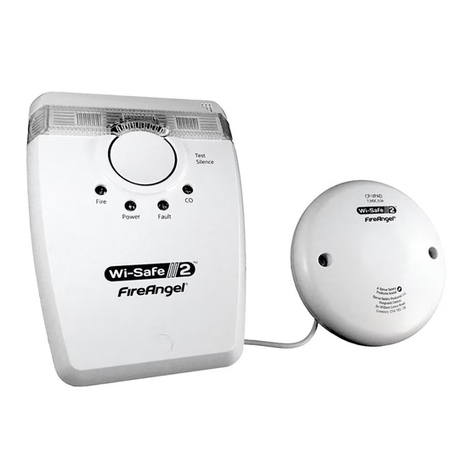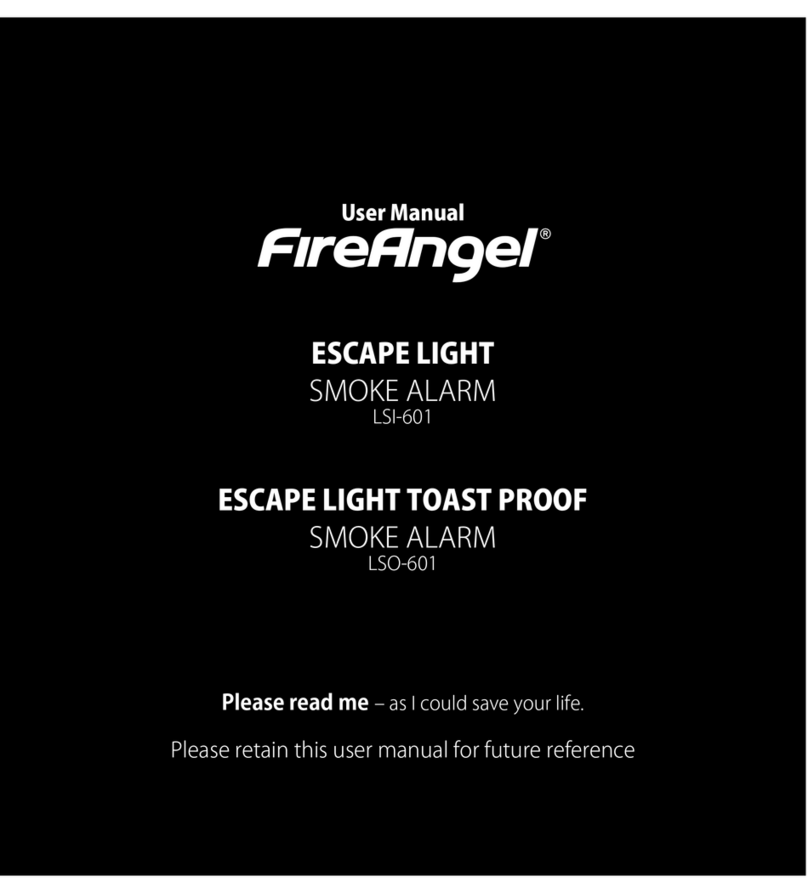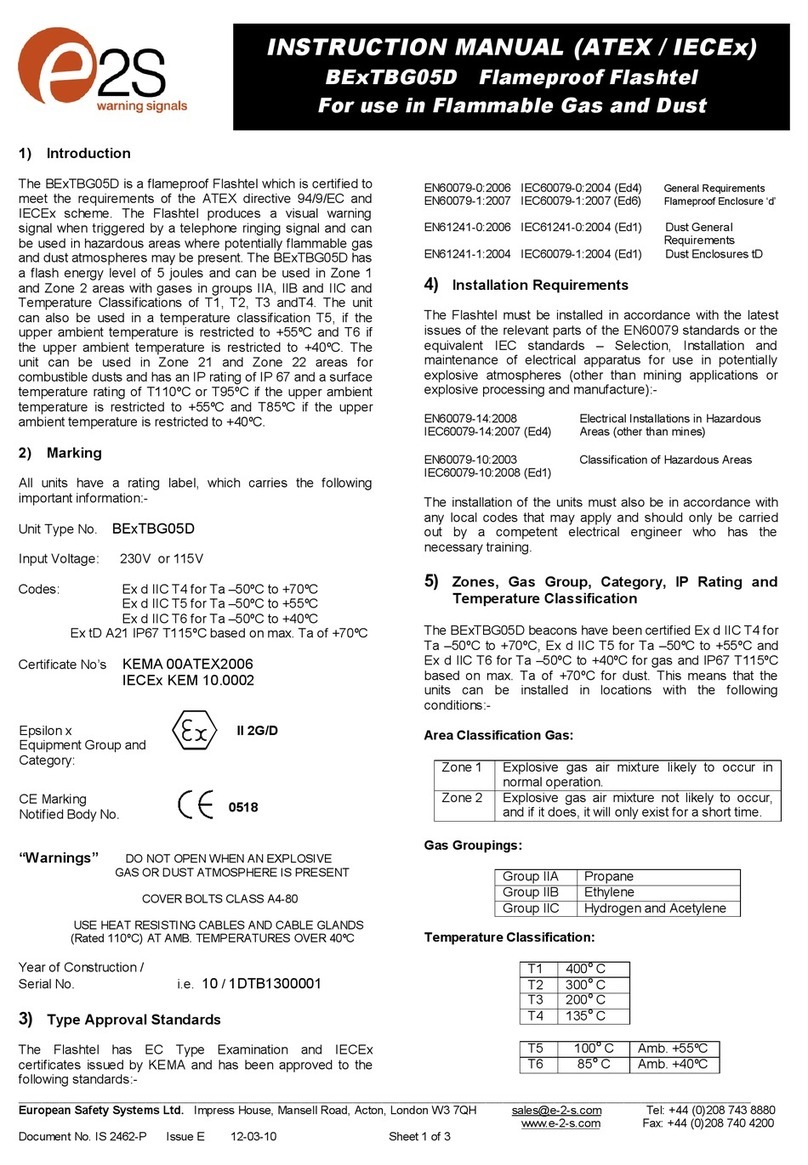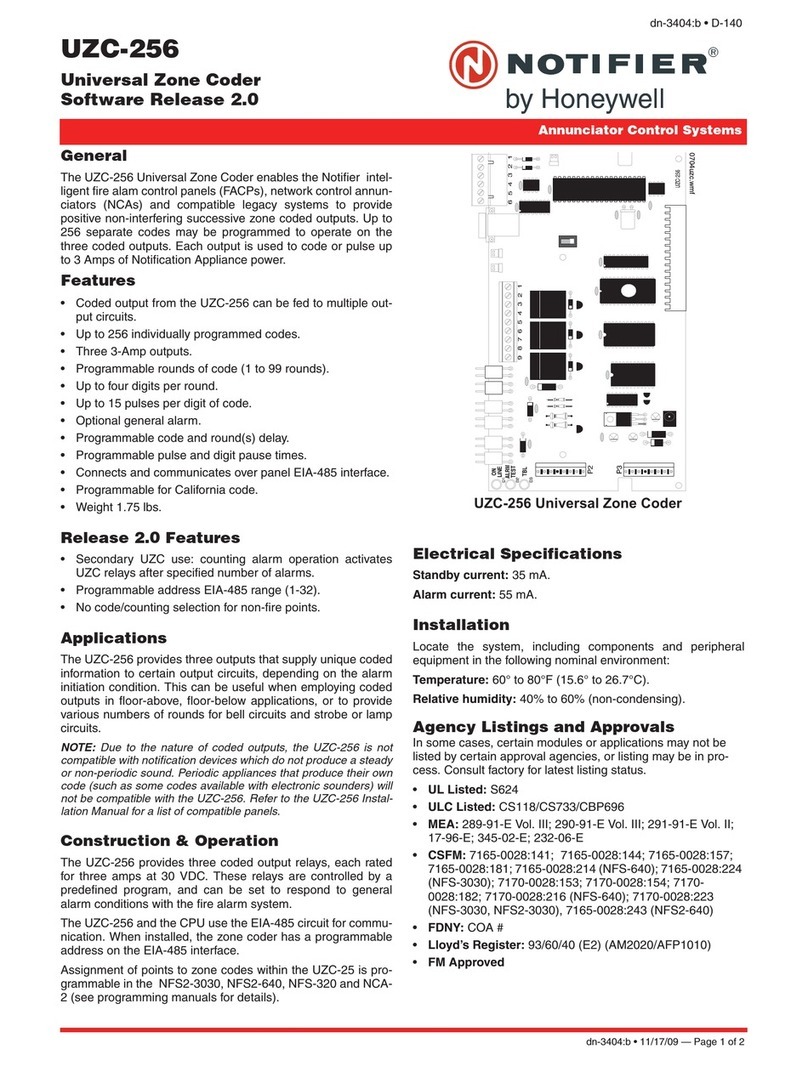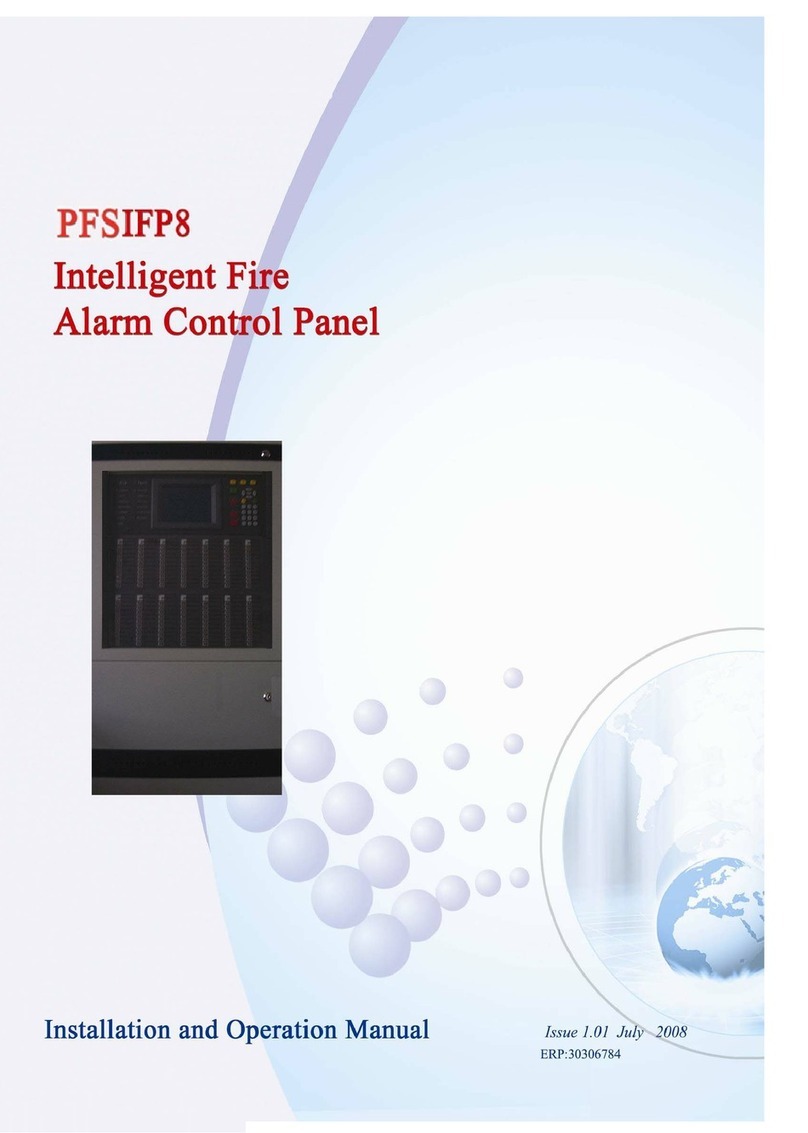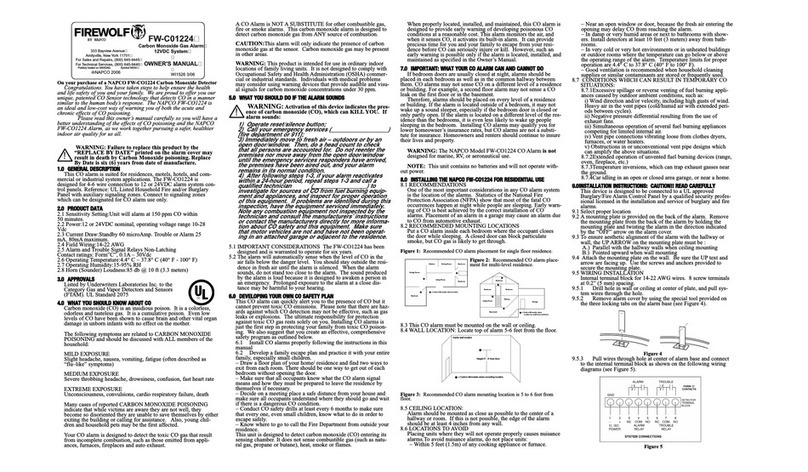5
far from the cooking appliances as possible
and near to where the person sleeps.
• If the appliance is in a room not normally
used (for example a boiler room), the alarm
should be put just outside the room so
that it may be heard more easily.
WHERE IN THE ROOM SHOULD I
PLACE THE ALARM?
For alarms located in the same room as a
fuel-burning appliance (for both wall and
ceiling mounted alarms) the following
applies:
• The alarm should be at a horizontal
distance of between 1m and 3m from the
potential source.
• If there is a partition in a room, the alarm
should be located on the same side of the
partition as the potential source.
• Carbon monoxide alarms in rooms with
sloped ceilings should be located at the
high side of the room.
In addition to the above the following must
be observed if the alarm is located on a
wall:
• It should be located close to the ceiling.
• It should be located at a height greater than
the height of any door or window.
• It should be at least 150mm from the
ceiling.
If the alarm is located on the ceiling:
• It should be at least 300mm from any
wall and any ceiling obstruction e.g. light
fittings.
Alarms located in sleeping rooms and
in rooms remote from a fuel-burning
appliance should be located relatively
close to the breathing zone of the
occupants.
CARAVANS
Caravans may have additional risks of
carbon monoxide admission through
air vents, due to the nearby presence of
other vehicles, engines, generators or
barbecues, however this does not change
the basic guidance on the location of the
alarm. Caravans should be fitted with an
alarm in the same room as any combustion
appliance(s), located in accordance with
previous advice in this section. If the
caravan has a single living space which
incorporates the sleeping accommodation,
it can be considered to be equivalent to
a bedsit, and a single alarm is sufficient.
However, any sleeping accommodation
which is in a separate room from the
combustion appliance(s) should also
contain an alarm, located in accordance
with previous advice in this section. It is
not always possible to find an optimum
location for an alarm, for example, a small
caravan may not have suitable vertical
surfaces available. Nevertheless, when
fitting an alarm in such situations, the
two most important considerations when
selecting an appropriate location are:
• Not mounting the alarm directly above a
source of heat or steam.
• Mounting the alarm at a distance of 1-3m
from the nearest edge of the potential
source.






